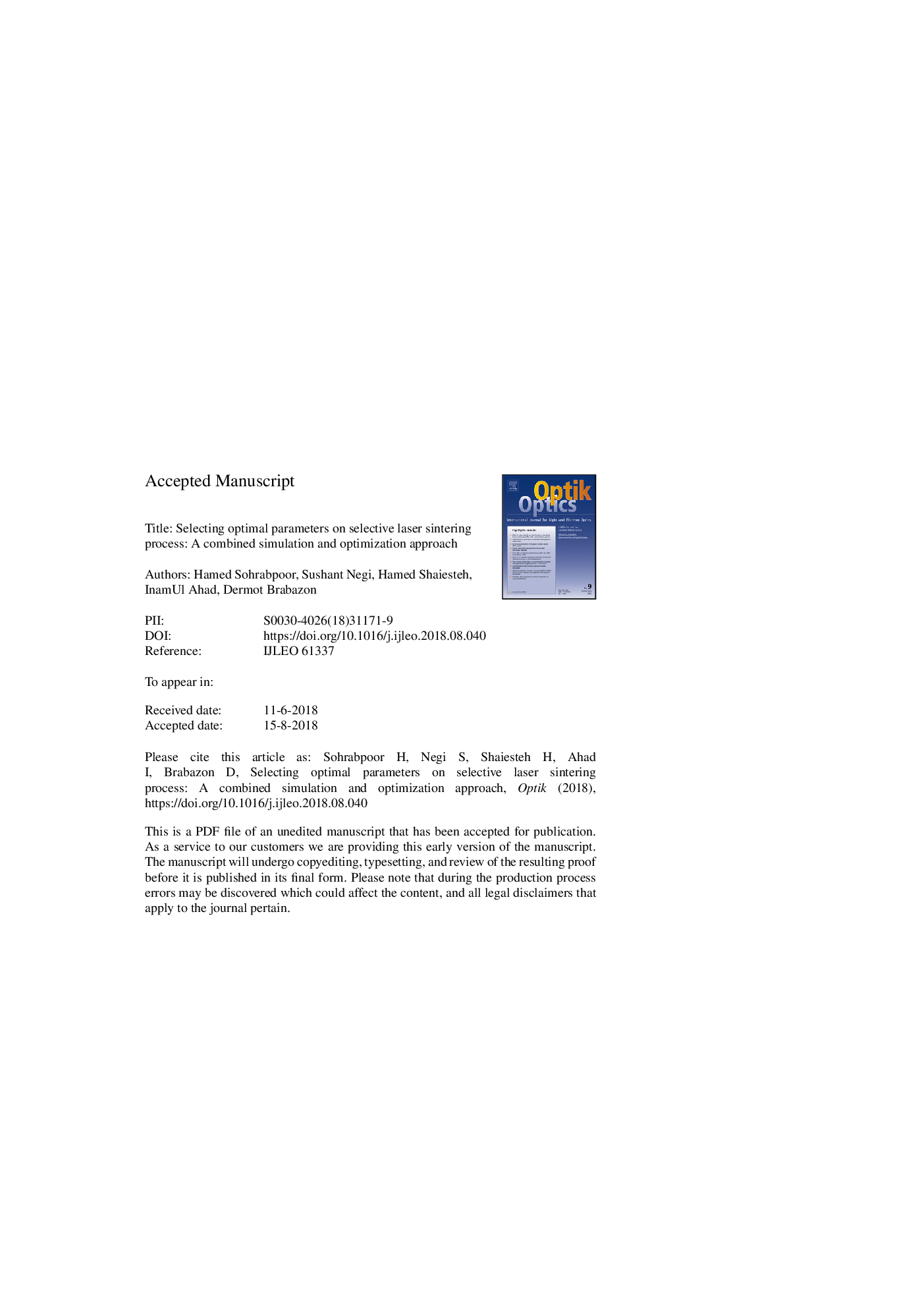| Article ID | Journal | Published Year | Pages | File Type |
|---|---|---|---|---|
| 10134114 | Optik - International Journal for Light and Electron Optics | 2018 | 23 Pages |
Abstract
Selective laser sintering (SLS) is a novel fabrication technique with multiple industrial applications in different industrial sectors. Choosing optimum combination of elements which lead to the best component properties and lower process cost are required in the SLS process. In this study, we focused on advanced modeling and optimization method developed for obtaining the best mechanical properties of SLS produced glass filled polyamide parts. The key processing parameters examined were part bed temperature, laser power, scan speed, scan spacing, and scan length. Response output properties measured were elongation and ultimate tensile strength. Five factors with three levels according to the central composite design were trailed. Adaptive neuro-fuzzy inference system (ANFIS) was employed to generate a mapping relationship between the process factors and the experimentally observed responses. In order to achieve best mechanical characteristics, the acquired model was used by simulated annealing algorithm as an objective function. Grey relational analysis (GRA) as a multi-response optimization technique was also applied to evaluate which modeling technique could perform best for defining the process elements to obtain the highest mechanical properties. In comparing the two optimization methods, the results indicated that the ANFIS-SA system outperformed the GRA in finding optimal solutions for the SLS process applied for glass fiber reinforced part production.
Keywords
Related Topics
Physical Sciences and Engineering
Engineering
Engineering (General)
Authors
Hamed Sohrabpoor, Sushant Negi, Hamed Shaiesteh, InamUl Ahad, Dermot Brabazon,
